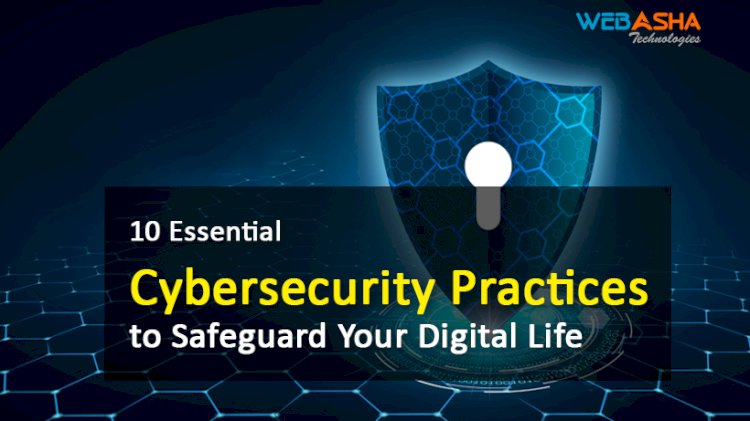10 Essential Cybersecurity Practices to Safeguard Your Digital Life
Safeguard your digital life with these ten essential cybersecurity practices. Learn how to protect your personal information, identify phishing attempts, secure IoT devices, and more. Stay informed and navigate the digital world safely.

In our increasingly digital world, where convenience is at our fingertips, the importance of cybersecurity has never been more evident. From personal data breaches to large-scale cyberattacks on corporations, the threat landscape is constantly evolving. To navigate this digital realm safely, it's crucial to adopt robust cybersecurity practices. In this comprehensive guide, we will delve into the ten essential cybersecurity practices that will empower you to safeguard your digital life effectively.
Introduction: The Digital Age and Its Vulnerabilities
The rapid advancements in technology have transformed how we live, work, and communicate. However, these conveniences come with inherent vulnerabilities that malicious actors often exploit. Cybersecurity is not just about protecting sensitive information; it's about securing our identity, finances, and even our physical safety in the modern era.
1. Strengthening Password Practices
Passwords are the first line of defense against unauthorized access. A strong password is complex, unique, and regularly updated. Consider using a passphrase that combines words, numbers, and symbols. Implementing multi-factor authentication (MFA) adds an extra layer of security, requiring a second form of verification.
2. Keeping Software Up to Date
Regularly updating your software, including operating systems, applications, and antivirus programs, is crucial. Updates often contain patches that address known vulnerabilities, safeguarding your system from potential threats.
3. Recognizing Phishing Attempts
Phishing attacks are among the most common cyber threats. They involve tricking individuals into revealing sensitive information through fake emails, websites, or messages. Be vigilant and verify the sender's identity and the authenticity of links before clicking.
4. Using Secure Wi-Fi Networks
Public Wi-Fi networks can be breeding grounds for cyberattacks. Avoid accessing sensitive information on public networks, as they lack encryption. If necessary, consider using a virtual private network (VPN) to encrypt your internet connection.
5. Regular Data Backups
Ransomware attacks can render your data inaccessible until a ransom is paid. Regularly backing up your data to an external device or cloud storage ensures that you can restore your information even in the event of a cyberattack.
6. Implementing Robust Firewall Protection
Firewalls act as barriers between your device and potential threats from the internet. Both hardware and software firewalls help filter out malicious traffic, preventing unauthorized access.
7. Educating Yourself and Others
Staying informed about the latest cybersecurity threats and trends is essential. Educate yourself and your family members or colleagues about the risks and best practices. Awareness is a powerful tool in preventing cyber incidents.
8. Securing Internet of Things (IoT) Devices
IoT devices, from smart thermostats to wearable tech, are convenient but can also be entry points for cyberattacks. Change default passwords, update firmware regularly, and limit device permissions to minimize vulnerabilities.
9. Monitoring Financial Statements
Regularly review your financial statements for any unauthorized transactions. Early detection can prevent financial loss resulting from credit card fraud or identity theft.
10. Practicing Caution on Social Media
Information shared on social media can be exploited by cybercriminals. Avoid oversharing personal details and adjust privacy settings to limit who can access your information.
Conclusion: Navigating the Digital World Safely
As our lives become increasingly intertwined with technology, safeguarding our digital presence is paramount. By adopting these ten essential cybersecurity practices, you empower yourself to navigate the digital landscape securely. Remember that cybersecurity is an ongoing effort; staying informed and vigilant is key to protecting your digital life from evolving threats.
By integrating these practices into your daily routine, you not only shield yourself from potential cyber threats but also contribute to a safer online environment for everyone. As technology continues to advance, so will the strategies of cybercriminals. Arm yourself with knowledge, awareness, and proactive measures to ensure that your digital life remains secure in an ever-changing world.











![Top 10 Ethical Hackers in the World [2025]](https://www.webasha.com/blog/uploads/images/202408/image_100x75_66c2f983c207b.webp)



![[2025] Top 100+ VAPT Interview Questions and Answers](https://www.webasha.com/blog/uploads/images/image_100x75_6512b1e4b64f7.jpg)







